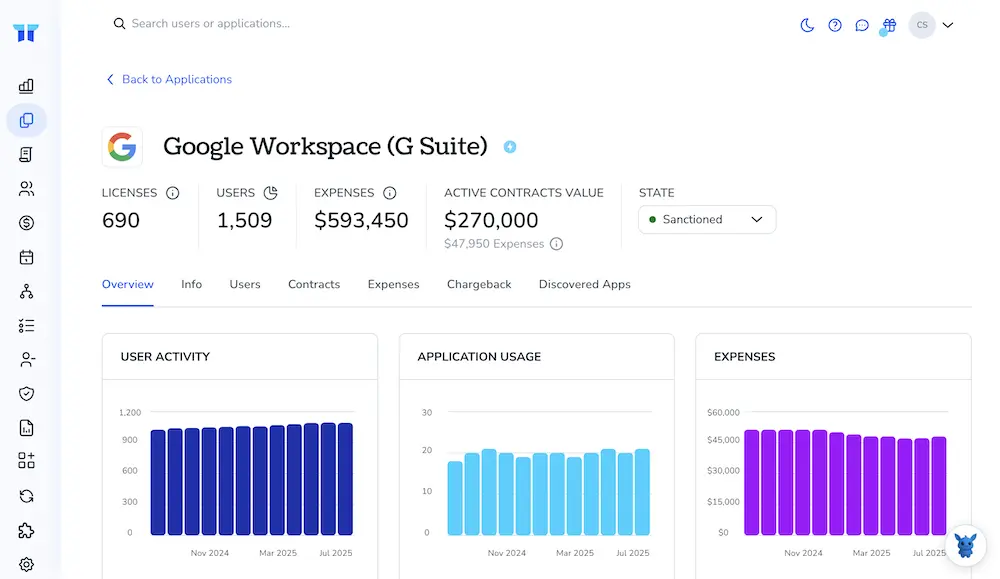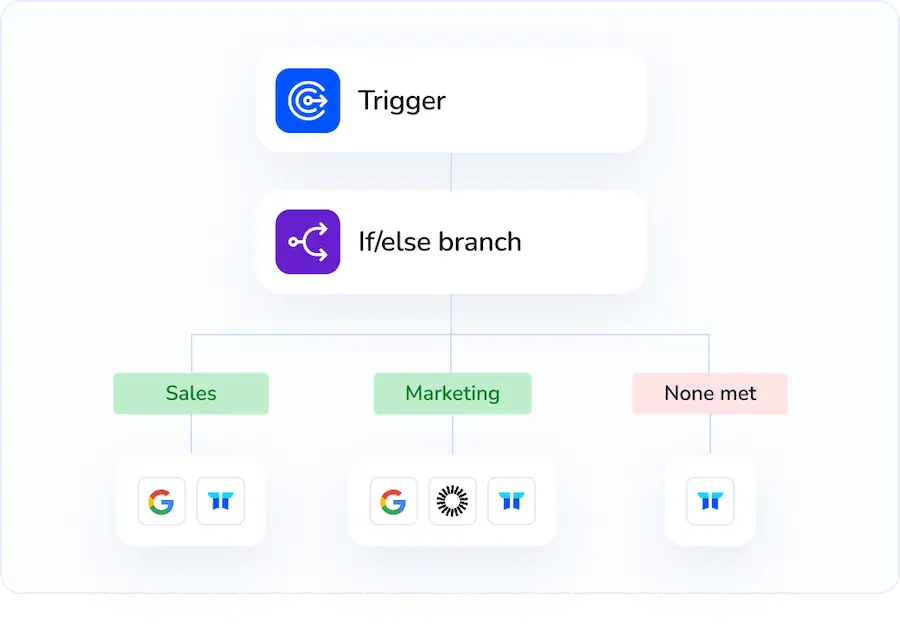3 Ways to Add Users to Groups in Google Workspace

Managing who can see what in Google Workspace gets tricky fast, especially when teams shift or projects spin up overnight. Groups are the admin’s shortcut for keeping access tidy.
This guide shows three straightforward ways to add people to a group, so you can move from clicking around to getting work done. Pick the method that fits your day.
Table of Contents
Use Google Workspace’s UI
This walkthrough uses the Google Admin console to place a user in an existing group. The same steps apply whether you add one address or several.
Step 1: Sign in to the Admin console
- Go to admin.google.com.
- Sign in with an account assigned the Groups administrator or super administrator role.
Step 2: Open the Groups list
- On the left, click Directory.
- Choose Groups.
The page lists all groups in the domain and shows the member count for each.
Step 3: Pick the group you want to update
Click the group’s name.
The group’s dashboard appears with tabs like Members, Settings, and Labels.
Step 4: Add new members
- Select the Members tab.
- In the top-right corner, click the blue person-plus icon labeled Add members.
- In the Add members window:
- Type a full email address or start typing a name and choose from the suggestions.
- Repeat for each person you’re adding (up to 100 at a time).
- For Role, leave Member or switch to Manager or Owner if the person needs extra permissions.
Step 5: Save your changes
Click Add to group.
Google confirms the update and, if enabled for the domain, sends a welcome email to each new member.
Step 6: Double-check membership
- You’re returned to the Members tab.
- Scan the list or use the search bar to be sure the new names are present.
That’s it. Google says the change processes in minutes, so the new members can start using the group almost immediately.
Use Torii
Many admins skip Google Workspace and lean on Torii, a SaaS management platform, to manage group membership instead. The tool pulls subscription data, handles onboarding and off-boarding, shows costs, and syncs integrations in one dashboard.
Set the task to run in Torii and the platform updates Google Workspace as soon as a trigger fires, whether that trigger is a new hire, a departure, or an upcoming renewal, which removes endless manual tweaks.
To add a user to Google Workspace groups from within Torii, follow these steps:
1. Sign up for Torii
Contact Torii and request a complimentary two-week proof of concept.
2. Connect your Google Workspace account to Torii
Once your Torii environment is live, connect the Google Workspace tenant to Torii by following these Google Workspace integration instructions.

3. Create a Torii workflow for Google Workspace
Inside Torii, open the Workflows tab, add the trigger you need, then pick the action that drops the user into the right Google Workspace group. From that moment, every time the trigger criteria match, Google Workspace updates automatically.

Use Google Workspace’s API
Below you’ll find the precise API calls for adding a user to a Google Workspace group. No screens or guesswork, just the endpoints and payloads you need.
Step 1. Get an access token with the right scope
Google’s Admin SDK needs an OAuth 2.0 token that carries the https://www.googleapis.com/auth/admin.directory.group.member scope.
- If you use a service account, create a signed JWT, impersonate an admin with domain-wide delegation, then exchange the JWT for an access token at
https://oauth2.googleapis.com/token. - If you use the installed-app flow, send the user through the normal OAuth consent screen and keep the refresh token handy.
Either way, save the resulting bearer token as ACCESS_TOKEN. You’ll pass it in the Authorization header on every Directory API call that follows from this setup.
Step 2. Build the request body
For this call, you only need two JSON fields total. Keeping the body lean reduces the chance of validation errors and makes logs easier to scan.
{
"email": "[email protected]",
"role": "MEMBER"
}
Options for role are MEMBER, OWNER, or MANAGER.
Step 3. Call members.insert
To add the user, send a POST request to the group’s members collection. The endpoint combines the group address with /members, so you don’t have to look up a numeric ID.
curl -X POST \
"https://admin.googleapis.com/admin/directory/v1/groups/[email protected]/members" \
-H "Authorization: Bearer $ACCESS_TOKEN" \
-H "Content-Type: application/json" \
-D '{
"email": "[email protected]",
"role": "MEMBER"
}'
A 200 OK response returns the new Member resource. The id value is handy for future updates. Keep that ID around if you plan to change roles later or remove the member in a cleanup job.
Step 4. Confirm the add (optional but smart)
hit the members.get endpoint using the same access token. A quick lookup here can save you from chasing ghost errors down the line during bulk imports.
curl \
"https://admin.googleapis.com/admin/directory/v1/groups/[email protected]/members/[email protected]" \
-H "Authorization: Bearer $ACCESS_TOKEN"
If the user shows up, the job’s done. If you get a 404, double-check the group key, email, and token scope.
Step 5. Handle common errors
403 insufficientPermissionsmeans the token is missing the group member scope or the admin account lacks rights.400 duplicatepops up when the user is already in the group.404 notFoundoften signals a typo in the group address.
Log these errors, alert the caller if needed, and move on to the next user in the queue.
That wraps it up; skip the UI and add users to groups with a single API call.
Torii for SaaS Management
Struggling to bring order to your growing SaaS stack? Torii’s SaaS Management Platform cuts through the noise, revealing what you have and what it costs.
- Uncover shadow IT: AI continually sweeps your organization to spot unapproved apps, all in real time.
- Reduce spend: Trim budgets by eliminating idle licenses and overlapping tools.
- Automate onboarding/offboarding: Offload repetitive IT workflows, cutting both effort and risk of mistakes.
- Never miss a renewal: Get proactive alerts before contracts expire.
Torii is the first unified SaaS Management Platform, giving Finance, IT, and Security teams a single source of truth.
For a closer look at how it works and what it can save you, visit Torii.
Frequently Asked Questions
Use the Admin console's Members tab, automate through Torii workflows, or call the Directory API's members.insert endpoint. Pick the visual UI, SaaS-management automation, or code-level integration depending on how often you need to update groups.
Google Workspace offers three roles you can set when adding a person: MEMBER for standard participation, MANAGER for moderating tasks, and OWNER for full control, including changing settings and deleting the group. Pick the least-privileged role the user needs.
The Add members window in the Admin console lets you enter or paste up to 100 email addresses per submission. If you need to load more, repeat the process or use Torii or the Directory API.
Torii connects to your Google tenant, then fires workflows based on triggers like new hires, departures, or renewals. When conditions match, it instantly calls Google Workspace to add or remove the specified users, eliminating repetitive manual steps.
When you use the Admin SDK Directory API, the access token must include the scope https://www.googleapis.com/auth/admin.directory.group.member. Without this permission, Google returns a 403 insufficientPermissions error and the insert call fails.
Expect three frequent responses: 403 insufficientPermissions when the token or admin lacks rights, 400 duplicate if the user is already in the group, and 404 notFound for typos in the group address or email. Fix and resend.

